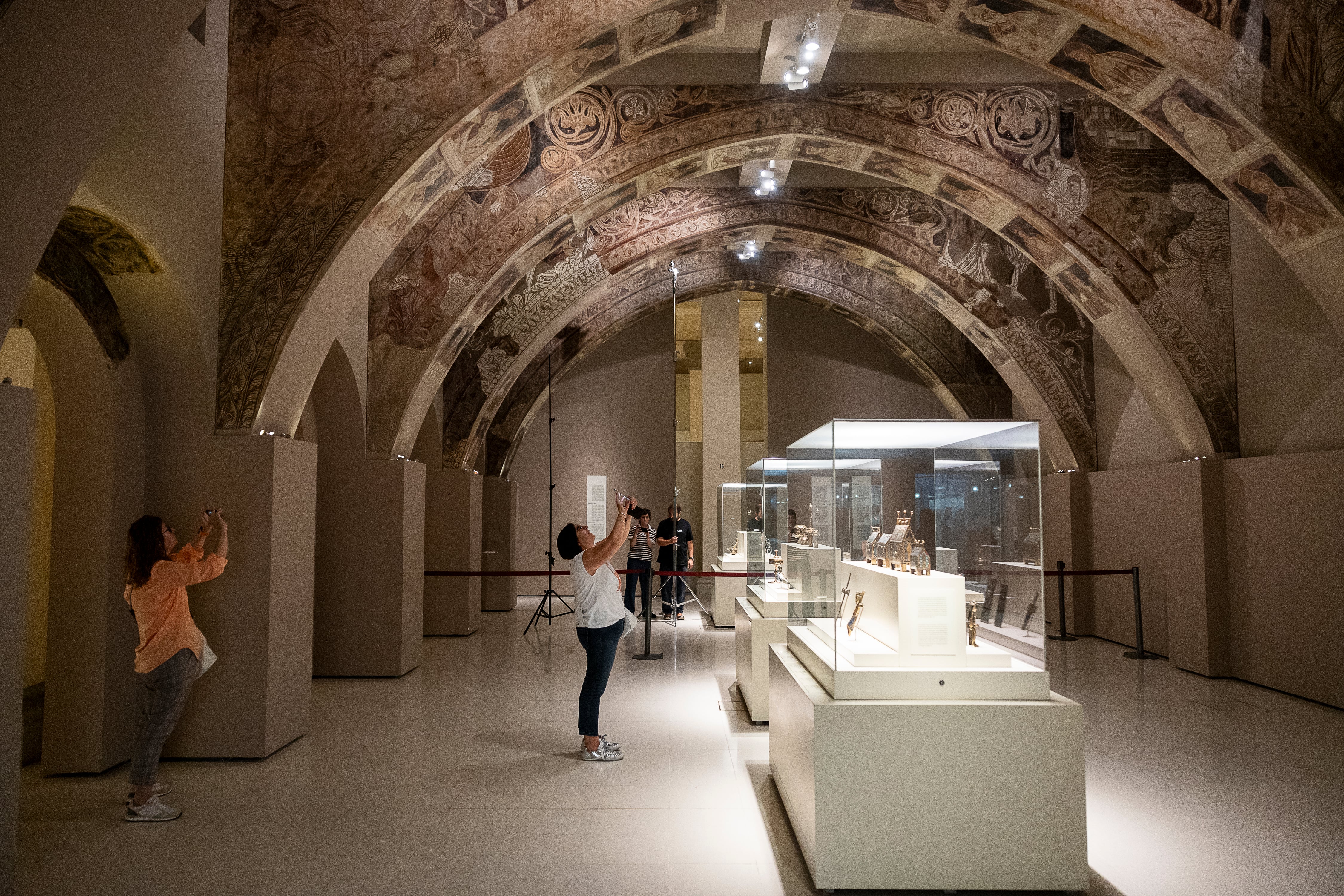More roles on the table of the head of the Court number 2 of Instruction of Huesca, who has the last word about the future of the Romanesque paintings originating in the monastery of Sijena and now exposed in the National Museum of Art of Catalonia (MNAC). The City Council of Villanueva de Sijena (Huesca) now asks him to warn the Minister of Culture, Ernest Urtasun, accusing him of a “possible hindered” in the execution of the judgment of the same court, and ultimately endorsed by the Supreme Court, which forces the MNAC to restore the important paintings of the twelfth century to the monogros cenobium. In a last attempt, the Barcelona Museum has required the judge to be attempt to the extreme fragility of that national heritage and the risk of transferring it to stop the execution of the judicial ruling.
The City Hall Movement, which is one of the plaintiffs of the return of the murals next to the Government of Aragon – that the rights of the works by the order of Malta have yielded -, obeys a somewhat confusing statements made last week by Urtasun, in which he claimed that in the current situation of the litigation the expert technicians in preservation of the heritage had to be left to work. The lawyer who represents the municipality of Oscense considers that a crime of usurpation of judicial functions could be produced.
The truth is that words have generated uncertainty both in Aragon and Catalonia, since they have not just resolved a question: do the technicians of the Institute of Cultural Heritage of Spain (IPCE) prepare a report on the status of Sijena’s paintings to determine if they can be moved without putting them at risk? These murals are classified as a good of cultural interest (BIC), greater degree of institutional protection that falls on the State. That is, the Ministry of Culture, through the IPCE, can have something to say in this litigation despite the court order. But Urtasun, or his team, has never clarified if they have activated the IPCE to prepare similar reports to those that have been written in other situations of doubtful performance, as was the case of the Lady of Elche. In any case, none of these reports have been used in a judicial process such as the one that now faces the MNAC with Aragon, but it is also true that the ministry that Urtasun directs is one of the three administrations that are in the Board of Trustees of the MNAC, together with the Generalitat (majority) and the Barcelona City Council. No one in the MNAC has dared to officially ask the IPCE to intervene in the dispute.
In the brief of Villanueva de Sijena, to which EFE has had access, his lawyer shows a “possible obstacle” to the fulfillment of the sentence by the Ministry of Culture and the IPCE and recalls that the Ministry itself did not resort to the sentence of first instance that acquitted him of not having prevented the illegal transfer of the works. The lawyer argues in this regard that by not appealing the sentence, the Ministry of Culture lacks legitimacy to have some type of intervention in its execution, “not even in regard to the transfer of the wall paintings to the monastery of Sijena.”
It considers that given the information that “confirmed” in relation to the collaboration of the Ministry of Culture with the National Museum of Art of Catalonia (MNAC) with the supposed purpose of preventing the execution process, “it is convenient to warn the minister that he can incur an alleged crime of usurpation of judicial powers if with those reports he intended to make fun of compliance with the sentence.”
A crime, adds the lawyer, which could mean sentences from six months to one year in prison, a fine of three to eight months and employment suspension or public office for one to three years. In his opinion, the fulfillment of this judgment “cannot be hindered through reports or interventions contrary to its natural compliance by the Ministry or the body of the dependent, the ICPE, since it is the Judiciary who must require in any case the collaboration of these, but not to stop fulfilling the dictated ruling, but to give it effective compliance”.
Despite that defense, the MNAC presented a package of documents that warn of the risks of the transfer a few weeks ago. In addition to internal reports of different types and another with the letterhead of the Generalitat and the Barcelona City Council – which says the Ministry of Culture that adheres, although there is no signature of any of its representatives -, the museum has achieved another two reports of relevant weight for whom they subscribe them: one is from Simona Sajeva, president of the International Scientific Committee of Mural Painting of the International Council of the International Council of Monuments and Historical Sites (ICOMOS), and the other is signed by the International Center for Studies for the Conservation and Restoration of Cultural Assets (ICCROM), the highest authority in preservation of cultural heritage and whose institution is made up of Spain.
All of them warn of the fragility and the need to carry out a risk assessment before moving any of the works that wore the chapter room of the Sijena monastery, which before being uprooted suffered the consequences of a great fire in the cenobium that seriously mismersted them.

